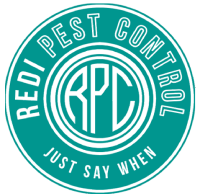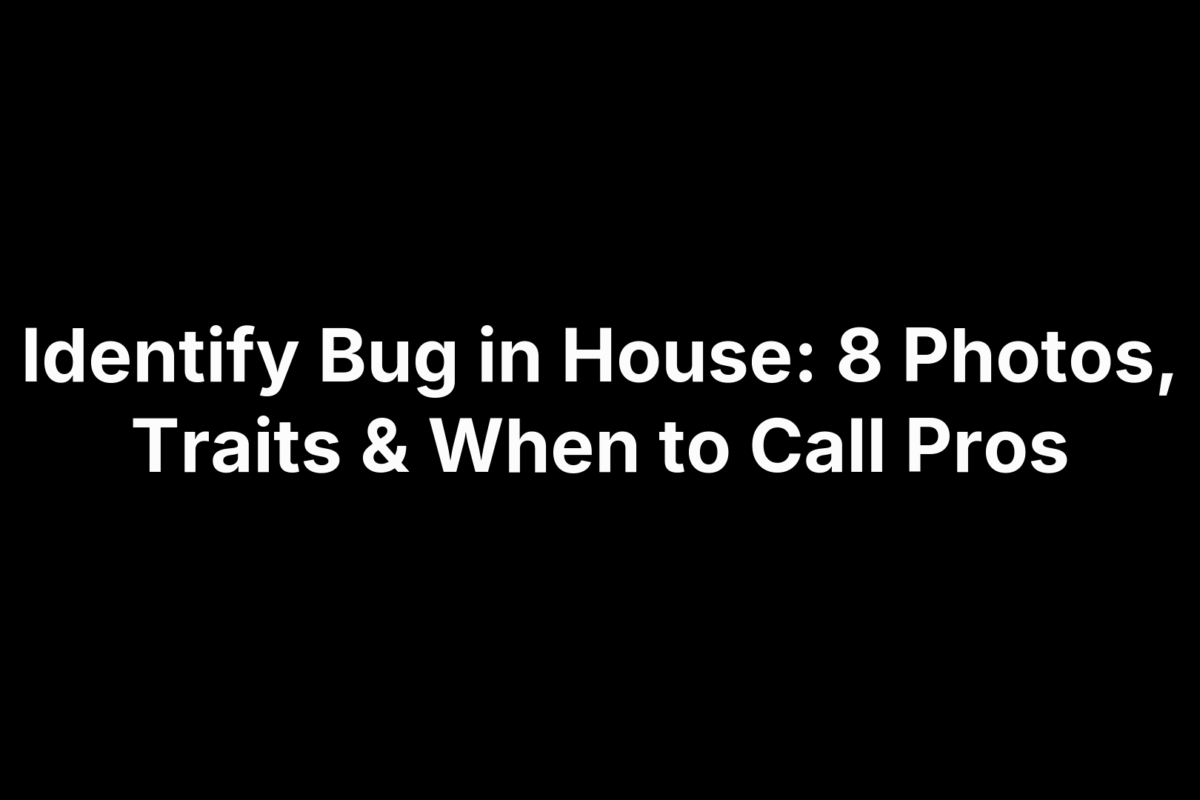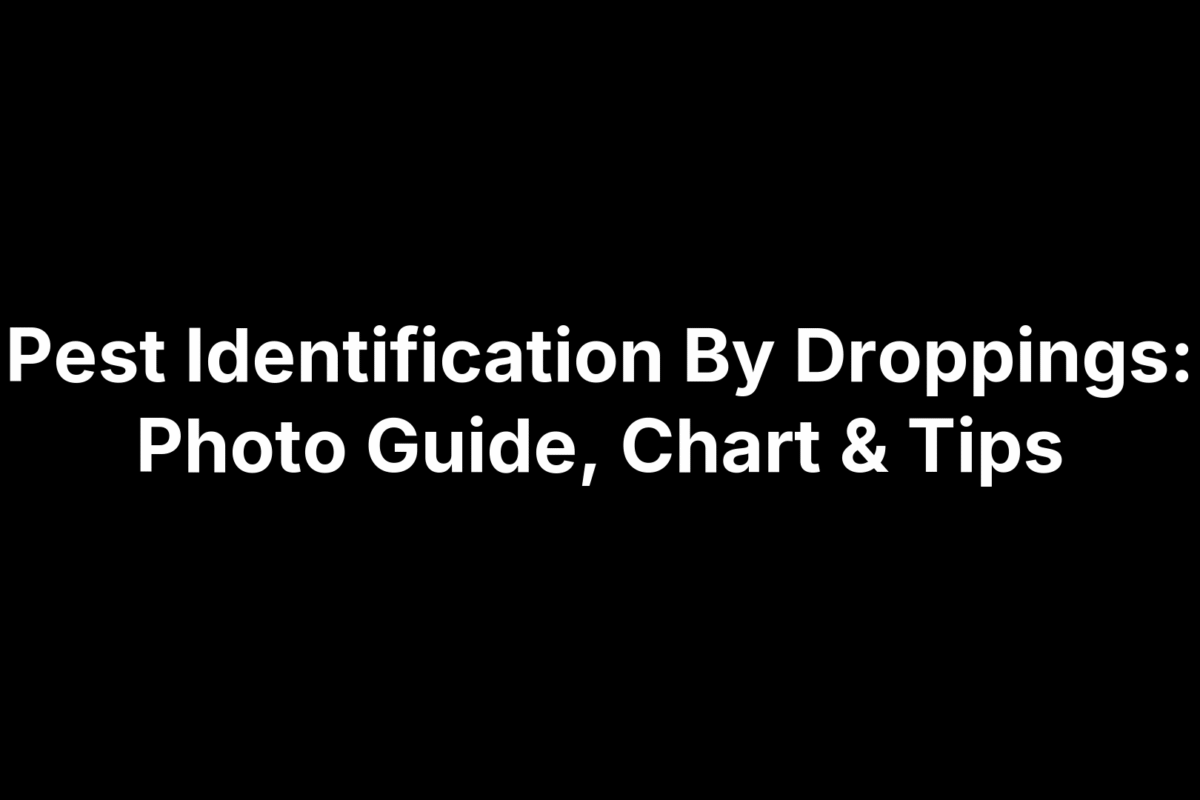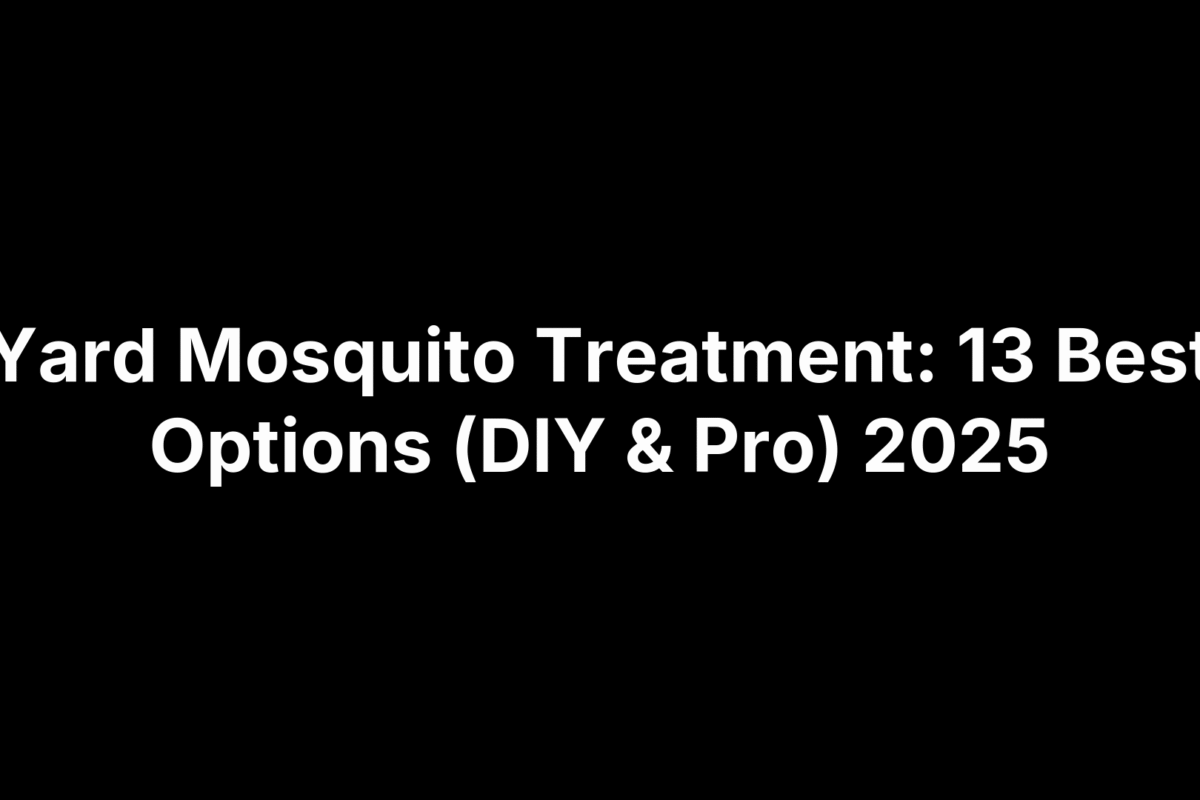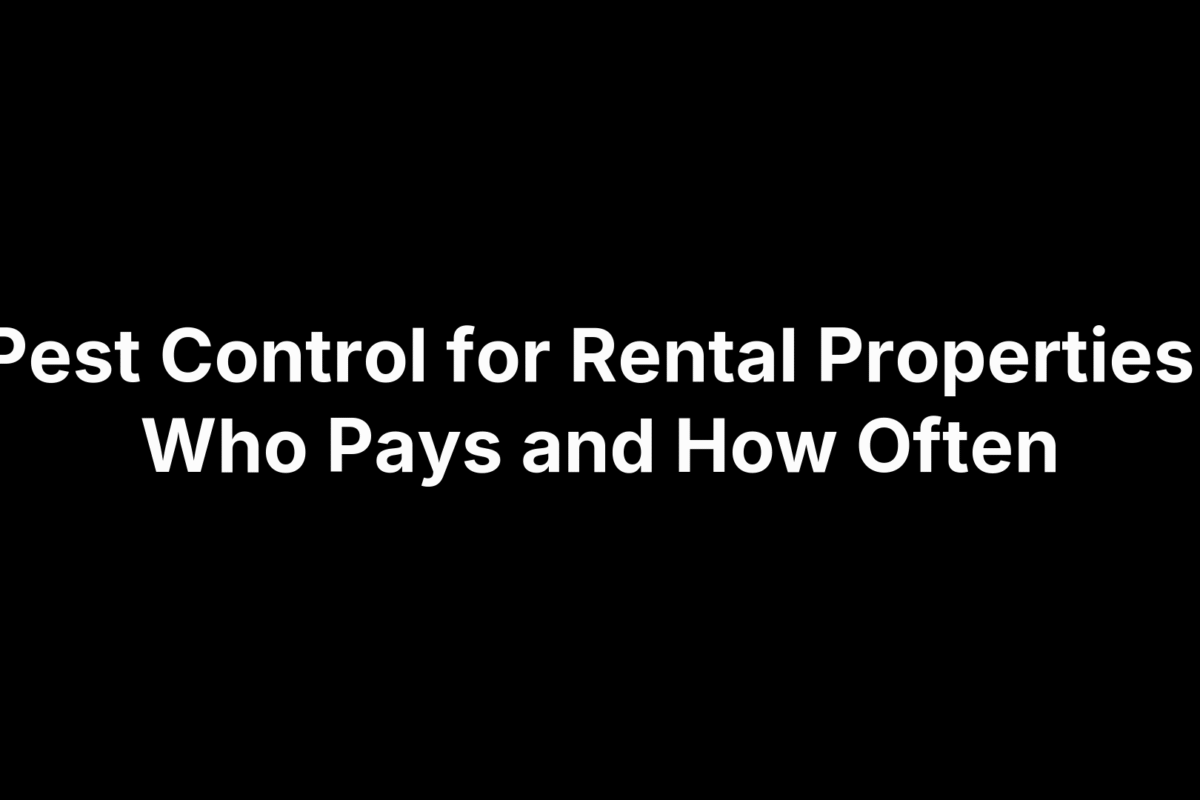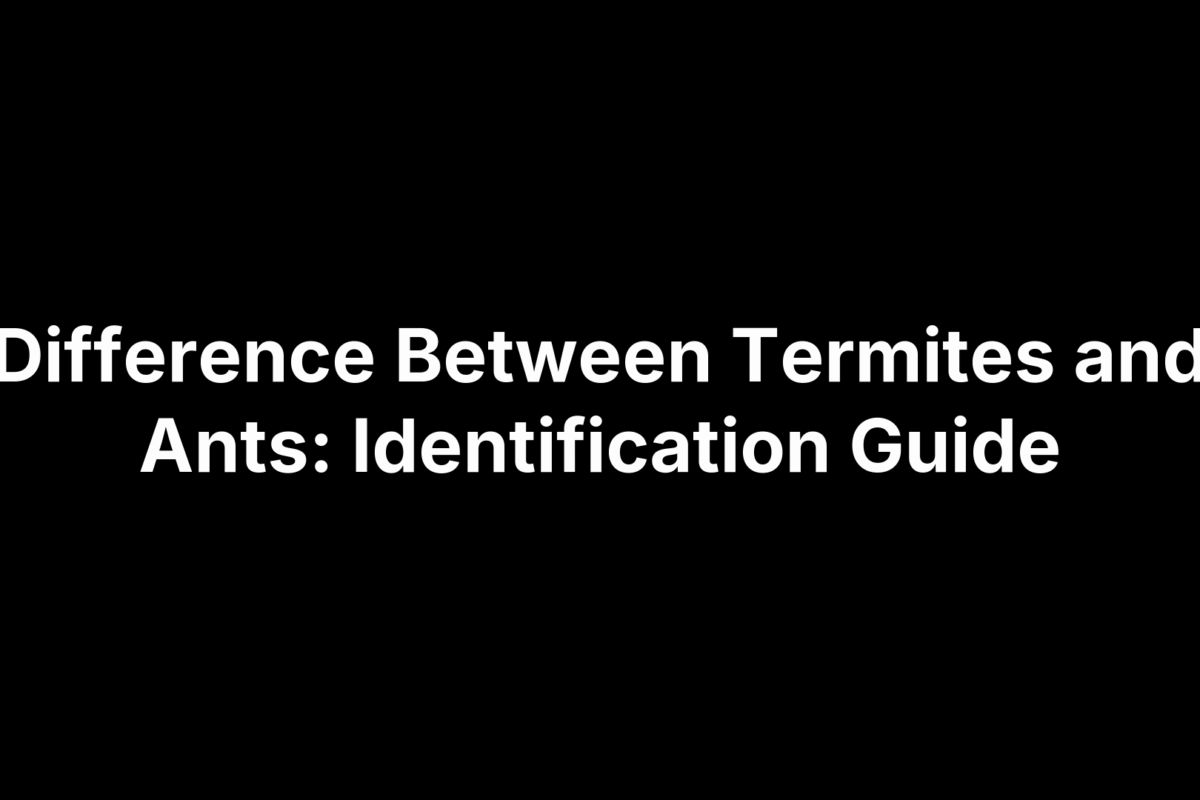You spotted a mystery bug sprint across the floor—or pop up in the pantry, on the bedframe, or near a window—and now you’re wondering if it’s a harmless wanderer or the start of a problem. Correct ID matters: ants, roaches, bed bugs, silverfish, pantry moths, fleas, and termite swarmers each need different action. Waiting can mean ruined food, chewed wood, multiplying eggs, or bites.
Use this quick, photo-led guide to identify the 8 most common indoor culprits in U.S. homes. For each, you’ll get clear traits to check, common lookalikes, where they appear, the risks if you ignore them, simple first steps you can do today, and when it’s time to call a pro. We’ll also show how Redi Pest Control LLC can confirm your ID fast and start on-site treatment if needed. Grab your phone, compare your bug to the photos, and let’s get answers.
1. Redi Pest Control LLC: fast bug ID and on-site treatment
If you’re trying to identify a bug in your house right now, Redi Pest Control LLC can confirm the species quickly and start targeted treatment the same day in many cases. Our team uses Integrated Pest Management to match the right method to the right pest—reducing risk, waste, and repeat issues for homes and businesses.
What to look for
Before we arrive, a quick checklist speeds up ID and treatment. Snap a clear photo and note a few traits.
- Size, shape, color: Measure roughly; note stripes, spots, or sheen.
- Legs, wings, antennae: Count legs (6 = insect, 8 = spider); look for equal/unequal wings.
- Movement and timing: Flies, jumps, crawls; active day vs. night.
- Location and signs: In pantry, bed seams, drains, baseboards; look for frass, shed skins, webbing, or mud tubes.
Common lookalikes
Many indoor pests have twins. Knowing the differences avoids the wrong DIY approach.
- Termite swarmers vs. flying ants: Equal wings and straight antennae vs. unequal wings and elbowed antennae.
- Carpet beetles vs. bed bugs: Fuzzy, oval beetles near fabrics vs. flat, reddish bed bugs near beds.
- Silverfish vs. firebrats: Both have 3 “tails”; firebrats favor hotter spots (near furnace).
- Drain flies vs. fruit flies: Fuzzy, moth-like by sinks vs. tiny tan flies hovering over fruit.
Where it shows up
Pests tend to cluster where food, moisture, and shelter meet.
- Kitchen/pantry: Stored grains, pet food, recyclables.
- Bathroom/drains: Standing moisture, organic buildup.
- Bedrooms/living areas: Bed seams, furniture joints, baseboards.
- Basements/utility: High humidity, clutter, foundation gaps.
- Windows/attic: Warm, sunny overwintering spots and entry points.
- Pet areas: Bedding, carpets, and floor cracks.
Risks if ignored
Small sightings can become costly fast.
- Food contamination: Pantry moths, flour beetles, ants, and roaches.
- Bites and irritation: Bed bugs and fleas.
- Structural damage: Subterranean termites and carpenter ants.
- Rapid spread: Many pests breed quickly in hidden voids and clutter.
Easy first steps
A little prep improves results and may stop minor issues.
- Seal and store: Put grains, pet food, and spices in airtight containers.
- Dry it out: Dehumidify basements; fix leaks; run bathroom fans.
- Clean drains: Use an enzyme cleaner; scrub traps for drain flies.
- Vacuum thoroughly: Carpets, baseboards, bed frames; bag and discard debris.
- Block entry: Weather-strip doors, caulk cracks, tighten screens.
- Save evidence: Keep a clear photo or a bagged specimen for the tech.
When to call a pro
Call Redi Pest Control if you see daily activity, bites/welts, swarmers or mud tubes, live roaches in daylight, or if DIY hasn’t cleared activity in 7–10 days. We’ll confirm the ID, explain your options, and deliver a customized, on-site treatment plan for fast, long-lasting relief—backed by professional monitoring to prevent the next wave.
2. Ants (odorous house ants vs carpenter ants)
If you’re trying to identify a bug in your house and it’s an ant, two frequent culprits are odorous house ants (the tiny kitchen trail-makers) and carpenter ants (the big ones tied to damp wood). Accurate ID matters: pantry invaders are usually solved with baits and sealing, while carpenter ants often signal moisture and wood-nesting that needs targeted treatment.
What to look for
Start with body size and where you found them, then note signs left behind. These clues separate nuisance trails from wood-nesting activity.
- Odorous house ants: Small, brown to black, fast-moving trails to sweets and moisture; often along baseboards, counters, and sink edges; foraging mostly in kitchens.
- Carpenter ants: Large (about 1/4–1 inch), brown to black; seen near moisture-damaged wood, window frames, or trees. Look for coarse sawdust-like frass kicked out of galleries and occasional spring swarms of winged ants. They nest in wood but don’t eat it.
Common lookalikes
Misidentification leads to wrong tactics. Use these quick distinctions.
- Winged ants vs. termite swarmers: Ants have a pinched waist, elbowed antennae, and two uneven wing pairs; termites have a straight waist, straight antennae, and four equal wings.
- Other small house ants vs. odorous house ants: Many small brown ants trail to food. Focus on trail behavior and kitchen hotspots rather than species-level features if DIYing—baits still help.
Where it shows up
Ants follow food, water, and safe shelter. Track their trail to narrow the nest zone.
- Odorous house ants: Kitchens, pantries, under sinks, around pet food, along window sills.
- Carpenter ants: Bathrooms, basements, crawl spaces, wall voids near leaks, around exterior siding, decks, and tree stumps.
Risks if ignored
Leaving ant activity unchecked can escalate from annoyance to costly repairs.
- Food contamination: Trails to sugar, grease, and pet food.
- Structural concerns: Carpenter ants expand galleries in damp wood, worsening hidden moisture problems and damaging trim, framing, or siding.
Easy first steps
A few smart moves can collapse trails and make your home less attractive—especially while you schedule service.
- Clean and store: Wipe up crumbs/grease; put grains and pet food in airtight containers.
- Dry it out: Fix leaks, dehumidify damp rooms, run exhaust fans.
- Bait, don’t spray: Use ant bait stations along trails and entry points; avoid spraying over baits.
- Block entry: Caulk gaps, weather-strip doors, tighten screens; trim vegetation touching the house.
- For carpenter ants: Collect any frass, note moisture sources, and avoid tearing into walls before inspection.
When to call a pro
Bring in Redi Pest Control LLC if you see daily trails that persist after a week of baiting, repeated spring swarms, frass piles or hollow-sounding wood, activity near leaks or siding, or ants reappearing after DIY efforts. We’ll confirm the species, pinpoint nests, correct moisture issues, and apply the right treatments—pairing baits, exclusion, and targeted applications for long-lasting control.
3. Cockroaches (German vs American)
If you’re trying to identify a bug in your house and it darts when the lights come on, think roaches. Getting the species right matters because German cockroaches thrive inside kitchens and bathrooms, while American cockroaches are larger and often tied to basements and utility areas. Sanitation and baits are the backbone of control.
What to look for
Start with size, color, and where you found them. Roaches are flattened with long antennae and are most active at night.
- German cockroach: Small, tan to light brown with two dark stripes behind the head; clusters around cabinets and warm appliances in kitchens/baths.
- American cockroach: Larger and reddish‑brown; more often seen in basements, utility rooms, and near floor drains.
Common lookalikes
Some beetles wander indoors and get mistaken for roaches. Focus on body shape and antennae.
- Carpet beetles vs. roaches: Carpet beetles are small, oval, and often patterned; roaches are flatter, longer, and have prominent antennae.
- Wood roaches vs. pest roaches: Outdoor wood roaches wander in but don’t usually infest kitchens; persistent indoor activity points to German or American roaches.
Where it shows up
Roaches follow food, moisture, and shelter.
- German: Kitchens, bathrooms, under sinks, behind refrigerators/stoves, inside cabinet hinges.
- American: Basements, laundry/boiler rooms, crawl spaces, utility chases, and sewers that connect to floor drains.
Risks if ignored
Even a few can escalate quickly.
- Food and surface contamination in kitchens and pantries.
- Rapid multiplication in hidden cracks and wall voids.
- Spread through multi‑unit buildings via plumbing and shared walls.
Easy first steps
Small changes make a big impact and set up professional treatments for success.
- Sanitation first: Nightly wipe‑downs, no dirty dishes, tight‑lidded trash.
- Store smart: Airtight containers for grains, snacks, and pet food.
- Moisture control: Fix leaks; dry sinks and counters overnight.
- Use baits, not sprays: Place roach baits where activity is seen; avoid spraying over baits.
- Declutter and seal: Reduce cardboard, seal gaps around pipes and baseboards.
When to call a pro
Call Redi Pest Control if you’re seeing roaches daily, spotting them in daylight, finding nymphs or egg cases, activity continues after a week of baiting, or you’re in a multi‑unit building. We’ll confirm the species, target harborages, and deploy a bait‑led, low‑odor plan that pairs sanitation, exclusion, and precise applications for durable results.
4. Bed bugs
If you’re trying to identify a bug in your house and you’re waking with itchy lines or clusters of bites, check the bed and nearby furniture. Bed bugs are small, reddish‑brown, oval, and wingless. They hide in tight seams and crevices, feed at night, and spread quickly if untreated, which is why prompt, correct ID matters.
What to look for
Confirming bed bugs is about the bug and the signs they leave. Adults are about 1/4–3/8 inch before feeding and turn bloated and darker after a meal. Look closely along mattress seams, box springs, and headboards for evidence.
- Reddish‑brown, oval, flat adults: Wingless; become swollen and darker after feeding.
- Tell‑tale signs: Dark fecal specks, shed skins, and tiny pale eggs glued in clusters.
- Night activity: Bites often appear in lines or groups; bugs hide during the day.
Common lookalikes
Several small household insects mimic bed bugs at a glance. Distinguishing them prevents wasted effort and the wrong treatment.
- Carpet beetles: Oval, patterned adults or fuzzy larvae near fabrics; not blood‑feeding.
- Bat bugs: Very similar to bed bugs but associated with bats; professional ID helps.
- Fleas: Much smaller, laterally flattened, and they jump; often in pet areas.
Where it shows up
Bed bugs stay close to where people rest, then spread outward as populations grow. Start your inspection within a few feet of sleeping and lounging spots.
- Mattress seams and tags; box springs and bed frames
- Headboards, nightstands, and furniture joints
- Sofas, recliners, baseboards, and outlet plates
- Luggage, backpacks, and laundry piles
Risks if ignored
A few bed bugs can become many in weeks. Delays make elimination harder and pricier, especially in apartments or shared walls.
- Escalating infestations as they spread through cracks and wall voids
- Repeated bites and sleep disruption leading to anxiety and missed work
- Cross‑unit spread in multi‑family buildings and to visitors
Easy first steps
While you arrange service, focus on containment and removal of harborages. Avoid over‑the‑counter foggers and random sprays that scatter bugs deeper.
- Declutter and isolate the bed: Pull it from walls; keep bedding off the floor.
- Vacuum seams and crevices: Use a crevice tool; seal and discard the vacuum bag.
- Launder on hot and dry on high heat: Bag items before and after to prevent re‑infestation.
- Use encasements: Zippered covers for mattresses and box springs can trap hidden bugs.
- Install interceptors: Place under bed legs to monitor and reduce bites.
When to call a pro
Call Redi Pest Control LLC at the first confirmed sighting, ongoing bites, or if activity is in more than one room—or any time you’re unsure. Professional bed bug control is recommended by experts, and we pair thorough inspection with targeted treatments and follow‑ups to break the life cycle and keep them from coming back.
5. Termite swarmers vs flying ants
Seeing winged insects indoors can be alarming—and for good reason. If you’re trying to identify a bug in your house that has wings, telling termite swarmers from flying ants determines urgency. One hints at a seasonal nuisance; the other may signal an active colony feeding on your home. Use the quick checks below.
What to look for
First, focus on three features: wings, antennae, and waist. Then check for tell‑tale signs around wood and foundations.
| Trait | Termite swarmers | Flying ants (reproductives) |
|---|---|---|
| Wings | Four wings of equal length, fluttery flight | Two pairs; front wings longer than back |
| Antennae | Straight | Elbowed (bent) |
| Waist | Broad, straight-sided | Pinched “hourglass” waist |
| Size/color | About 1/4–3/8 inch, dark | Varies; often brown to black |
- Termite clues: Mud tubes from soil to wood; soft or damaged wood. Reproductives often appear indoors or outdoors around the time colonies release swarmers.
- Ant clues (carpenter ants): Coarse sawdust‑like frass ejected from wood. They nest in wood but don’t eat it.
Common lookalikes
Winged ants of many species get confused with termites; carpenter ant swarmers are the most common mix‑up. If you can’t confidently match wing length and antenna shape, save a specimen or clear photo for professional ID.
Where it shows up
Swarmers may appear suddenly after warm, humid weather changes:
- Indoors or outdoors near baseboards, door frames, and foundation cracks
- Moisture areas: basements, crawl spaces, bathrooms, utility rooms
- Exterior trouble spots: siding edges, deck posts, steps, and slab gaps
Risks if ignored
- Subterranean termites: Ongoing, hidden structural damage as they feed inside wood and travel in mud tubes.
- Carpenter ants: Expanding nests in damp wood and worsening moisture problems.
Easy first steps
- Document, don’t demolish: Photograph insects, tubes, and frass; keep a specimen.
- Reduce moisture: Fix leaks, improve ventilation, and dehumidify damp rooms.
- Limit food and shelter: Move wood/yard debris away from the foundation; don’t store cardboard against concrete.
- Avoid broad spraying: It can scatter pests and complicate treatment targeting.
When to call a pro
Call Redi Pest Control LLC immediately if you see insects with four equal wings, find mud tubes or soft wood, notice recurring spring swarms, or can’t distinguish ants from termites. We’ll confirm the ID, inspect for hidden activity, and deliver a targeted plan—from moisture corrections to precise treatments—to protect your structure and stop the colony at its source.
6. Silverfish and firebrats
If you’re trying to identify a bug in your house that’s teardrop‑shaped and quick across bathrooms or storage boxes, you may be seeing silverfish or firebrats. They’re closely related, need humidity, and slip into paper, cardboard, and tight crevices—so moisture control is half the battle.
What to look for
Focus on body shape and those tell‑tale “tails.”
- Flattened, carrot/teardrop shape (~1/2 inch): Gray to tan, with fine scales.
- Three rear filaments (“tails”): Plus long antennae in front.
- Moisture tie‑in: Often found in boxes, cabinets, bathrooms, and other warm spots.
Common lookalikes
They’re easy to confuse with similar, small crawlers.
- Firebrats vs. silverfish: Both have 3 “tails”; firebrats show more mottling and are often around hotter areas (e.g., near a furnace).
- Earwigs: Have rear pincers, not filaments.
- Roach nymphs: Bulkier, without the three filaments.
Where it shows up
They follow warmth, humidity, and paper/cardboard hideouts.
- Bathrooms, basements, and utility rooms
- Boxes, cabinets, and stored items
- Warm equipment areas and near furnaces
Risks if ignored
- Persistent nuisance: Populations can linger where humidity stays high.
- Material issues: Activity in boxes and papers can spoil stored items over time.
- Moisture warning: Ongoing sightings often signal a humidity or leak problem.
Easy first steps
- Dehumidify: Run a dehumidifier; fix leaks; vent bathrooms.
- Store smart: Keep books and papers in sealed containers.
- Reduce harborage: Declutter cardboard; elevate storage; vacuum baseboards and cracks.
When to call a pro
If sightings continue after you dry the area and containerize papers, or activity spreads to multiple rooms, call Redi Pest Control LLC. We’ll confirm whether you’re dealing with silverfish or firebrats, address moisture drivers, and apply targeted treatments to clear activity and keep it from returning.
7. Pantry pests (Indian meal moths and flour beetles)
If you’re trying to identify a bug in your house that’s hanging around the pantry, two prime suspects are Indian meal moths and flour beetles. Both hitchhike in dry goods, then spread quietly through boxes and bags. Quick, thorough cleanouts and airtight storage are the keys to stopping them.
What to look for
Start with the adult you see—and then check inside packages for hidden stages.
- Indian meal moths: Small moths with the outer half to two‑thirds of the forewings reddish‑copper; adults often fly at dusk and may crawl up walls. Look for webbing, larvae, or clumped food in cereals, rice, nuts, pet food, or birdseed.
- Flour beetles (red/confused): Tiny, slender, reddish‑brown beetles active inside flour, meal, cake mixes, and spices; you may notice fine flour “dust,” live adults when sifting, or tiny larvae mixed in product.
Common lookalikes
A few other stored‑product pests can mimic these in kitchens.
- Rice/granary weevils: Brown beetles with a distinct snout; often in whole grains like rice or pasta.
- Sawtoothed grain beetles: Very slender, with six saw‑like projections on each side of the thorax.
- Cigarette/drugstore beetles: Small oval beetles that may infest spices and dried goods and fly to windows.
- Fruit flies: Tiny tan flies with red eyes hovering over produce—not typically inside dry goods.
Where it shows up
Check every dry‑goods zone, not just the one open box you noticed.
- Kitchen pantries and cabinets
- Pet food and birdseed storage
- Bulk dry goods and baking supplies
- Spice racks and snack bins
Risks if ignored
Left alone, pantry pests spread from one item to the next and keep cycling.
- Food waste and contamination across multiple packages
- Persistent adult moths/beetles even after tossing one box
- Re‑infestation via overlooked pet food or birdseed
Easy first steps
Do a full sweep once—thorough beats repeated spot tosses.
- Locate and discard all infested items (double‑bag before trash).
- Inspect everything dry: cereals, grains, flour, mixes, nuts, dried fruit, spices, pet food, and birdseed.
- Store clean items airtight in glass or hard plastic—or freeze susceptible foods to prevent problems.
- Vacuum shelves and cracks; wash with soapy water, then dry completely.
- Wipe spills, date new purchases, and rotate stock.
- Avoid spraying shelves or food: pesticides indoors linger; focus on removal and sealing.
When to call a pro
If you still see adult moths or beetles a week after a full cleanout, activity spans multiple rooms, or you manage a commercial or multi‑unit pantry area, call Redi Pest Control LLC. We’ll confirm the species, find the source (including pet/bird feed), and set a targeted plan to clear current infestations and prevent the next one.
8. Fleas
If you’re trying to identify a bug in your house that’s tiny, dark, bites ankles, and seems to teleport, think fleas. They’re wingless but powerful jumpers that hide in carpets and pet areas, and their larvae develop out of sight in floor cracks and fabrics.
What to look for
Confirm with size, shape, movement, and where you spotted them. Adults bite and jump; larvae are hidden in debris.
- Adults: 1/16–1/8 inch, brownish‑black, laterally flattened, wingless, strong jumpers.
- Larvae: Worm‑like, whitish (≈1/5 inch) in carpets, floor cracks, pet bedding.
- Clues: Itchy clustered bites (often lower legs), pets scratching, dark specks in fur/bedding.
Common lookalikes
Several small indoor pests get mistaken for fleas. Use jump/ bite behavior to separate them.
- Bed bugs: Larger, oval, don’t jump; hide in beds and seams.
- Springtails: Tiny and jump but don’t bite; cluster in damp areas.
- Carpet beetle larvae: Fuzzy crawlers near fabrics; no biting.
Where it shows up
Fleas track with pets, fabric, and floor gaps.
- Carpets, rugs, upholstered furniture, baseboards
- Pet bedding and resting spots
- If no pets: Check for wildlife (raccoons/squirrels) nesting in chimneys, attics, or under porches.
Risks if ignored
Fleas cycle through eggs, larvae, and adults in your home environment.
- Persistent bites and irritation
- Reinfestation from untreated pets/areas
- Spread into multiple rooms and fabrics
Easy first steps
Target both adults and larvae, and coordinate pet care with environmental cleanup.
- Thoroughly vacuum carpets, upholstery, under furniture, and along baseboards; seal and discard the bag.
- Launder pet bedding on hot; dry on high heat.
- Use a product with an IGR (e.g., methoprene) to control larvae; follow all label directions.
- See your veterinarian for the best on‑pet treatment.
- If no pets: Investigate and remove wildlife nests; seal entry points.
When to call a pro
If bites continue after thorough vacuuming, IGR use, and pet treatment—or activity spreads across rooms—call Redi Pest Control LLC. We’ll confirm the ID, locate sources (including wildlife), and apply a targeted, low‑risk plan to break the life cycle and keep fleas from coming back.
What to do next
You’ve matched the photo and traits, checked the hot spots, and taken a few quick steps. Now watch for the signals that mean it’s time to act: daily sightings, bites or welts, damaged wood, pantry spread, or anything that keeps returning after a week of cleanup and sealing. The longer pests settle in, the harder—and costlier—they are to remove.
Save a clear photo or bagged specimen, note where and when you saw activity, and get help. Redi Pest Control LLC offers fast response, precise identification, and targeted treatment plans for homes, businesses, and property managers—backed by Integrated Pest Management for lasting results. Ready for relief? Request your bug ID and quote at Redi Pest Control.
